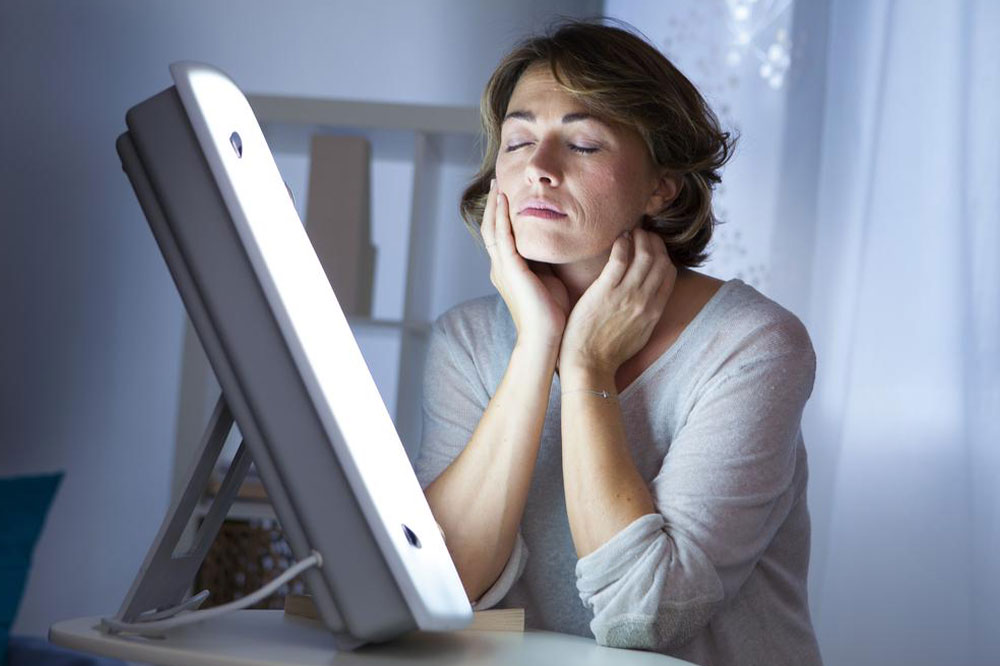
Light therapy lamps – Benefits, deals, and side effects
Beat the winter blues and enjoy a sun-kissed glow all year round with light therapy lamps, also known as SAD lamps. These light therapy lamps, which create bright light and resemble natural sunlight, are the ideal treatment for those with seasonal affective disorder (SAD) and other disorders. They help with various skin issues, including psoriasis and eczema, mood enhancement, better sleep, and internal clock regulation. However, overuse of this therapy might have side effects.
What is a light therapy lamp?
Devices that emit intense light to mimic natural sunshine include light therapy lamps and light boxes. The light that the lamps typically emit is blue, which is thought to have the greatest effect on circadian cycles and mood. The suggested range for light intensity is often 10,000 to 25,000 lux, and the recommended use time is ordinarily 20 to 30 minutes per day.
Light therapy lamps deals
Light therapy lamp deals may be found online and offline, making discovering a cost-effective remedy for your winter blues simpler. Look for seasonal discounts, clearance sales, and other light therapy lamp deals.
Moreover, online and offline retailers frequently offer discounts on light therapy lamps, particularly in the fall and winter. Costs might vary depending on the brand, size, and features. Bundles with extra bulbs or accessories for your light treatment lamp may be discounted.
Light therapy lamp benefits
The benefits of light therapy are numerous and well-documented.
- One of the benefits of light therapy lamps is that they are useful for various illnesses, including jet lag and insomnia.
- Bright morning light exposure can assist in regulating the body’s circadian rhythm, creating a healthy sleep and wake cycle.
- A light therapy lamp can assist persons who travel frequently and suffer from jet lag in resetting their body’s internal clock to the local time zone.
- Light therapy lamps have been demonstrated to improve skin disorders like psoriasis and eczema and have advantages for mood and sleep.
- UV-free light therapy is a secure and efficient treatment option for many illnesses since it can lower inflammation and encourage healing.
Light therapy lamp uses
The light therapy lamps primarily treat SAD symptoms like melancholy, exhaustion, and lack of energy. The lamps should not be used for more than 30 minutes in a day. The lamps can be utilized similarly for people who experience non-seasonal depression.
Light therapy lamp side effects
Even though light therapy lamp side effects are typically harmless, there are some possible adverse effects to be aware of. Eye strain is the most frequent adverse consequence of using lamps for an extended period or placing them too close to the eyes. Therefore, operating the lamps safely and following the manufacturer’s recommendations is crucial.
Some people might also have headaches, nausea, or other symptoms if they are sensitive to strong light. Furthermore, it’s critical to know that the light therapy lamps effect might interact with prescriptions used to treat bipolar illness or other mental health issues like those.
Some people may feel queasy or lightheaded during or after light therapy lamp sessions, especially if using a high-intensity lamp. This is believed to result from the strong light altering the brain’s equilibrium and balance regions. If you feel queasy, try reducing the light’s duration or intensity to see if it helps.
To avoid falls or injuries during light therapy sessions, sitting or standing steadily is crucial. In rare instances, light therapy lamps may result in skin rash or irritation. This is more likely to occur if you have sensitive skin or use a high-intensity lamp.
Light therapy lamps are generally considered safe when used as instructed; however, speaking with a healthcare professional is crucial before utilizing one. Overall, SAD, sleeplessness, and skin issues are just a few conditions that can be treated safely and effectively using light therapy lamps. Precautions must be taken before opting for this treatment. Consult a doctor and ask for recommendations.




